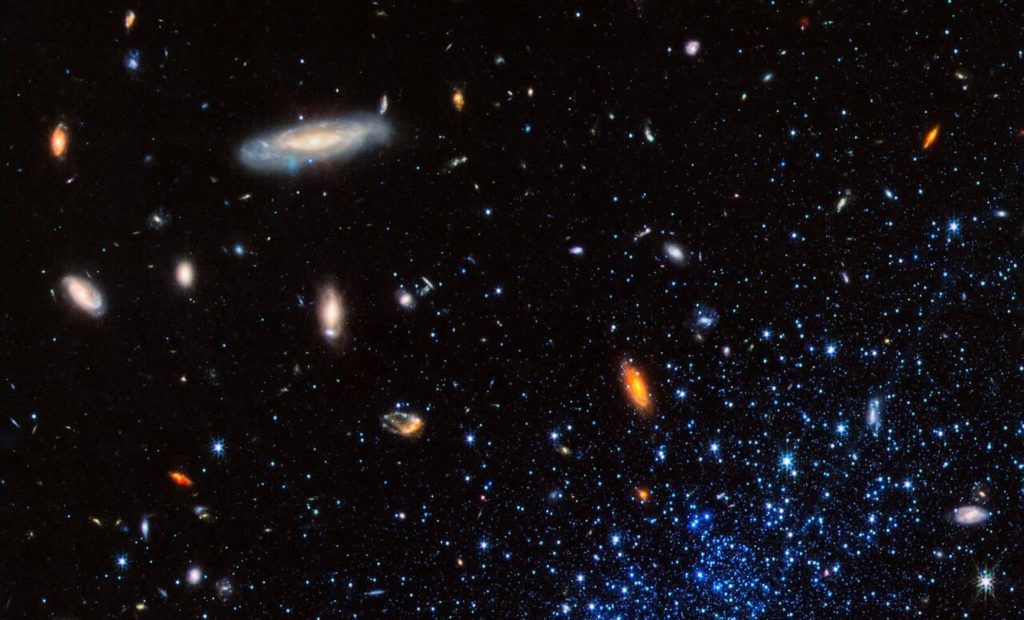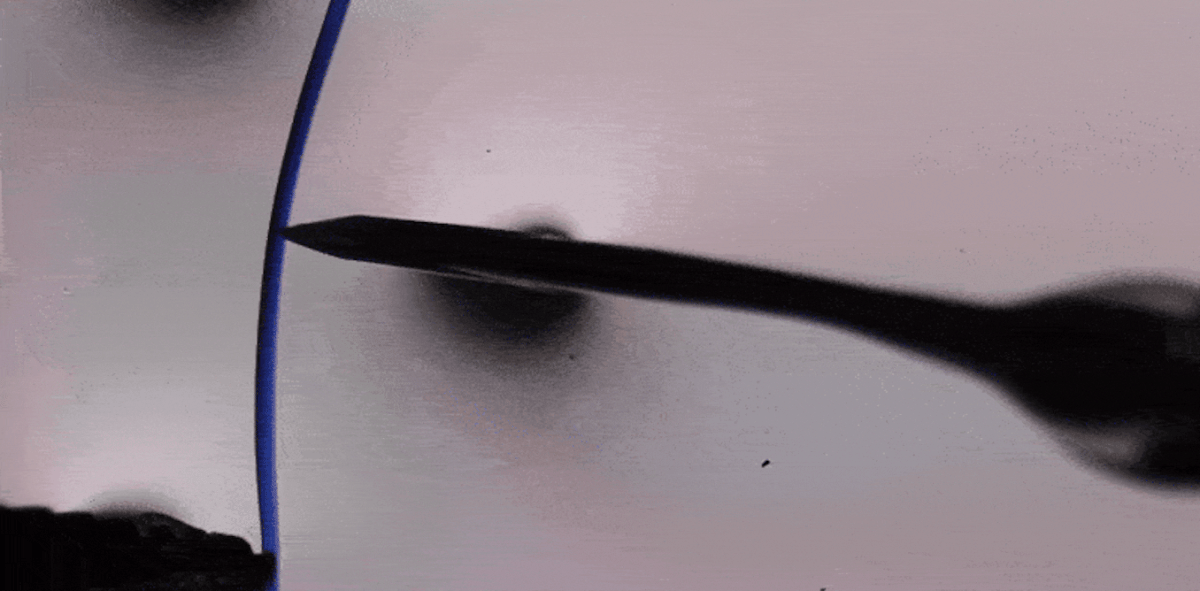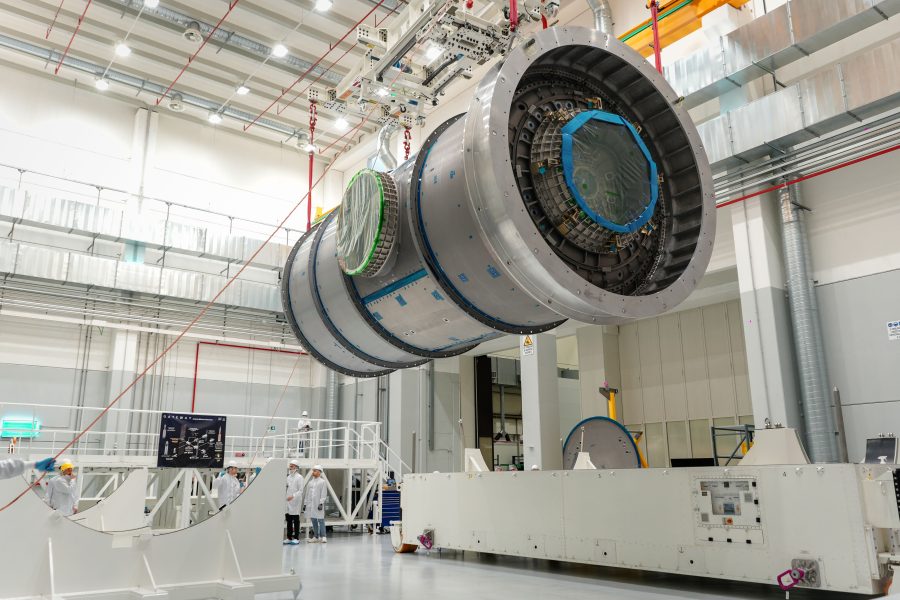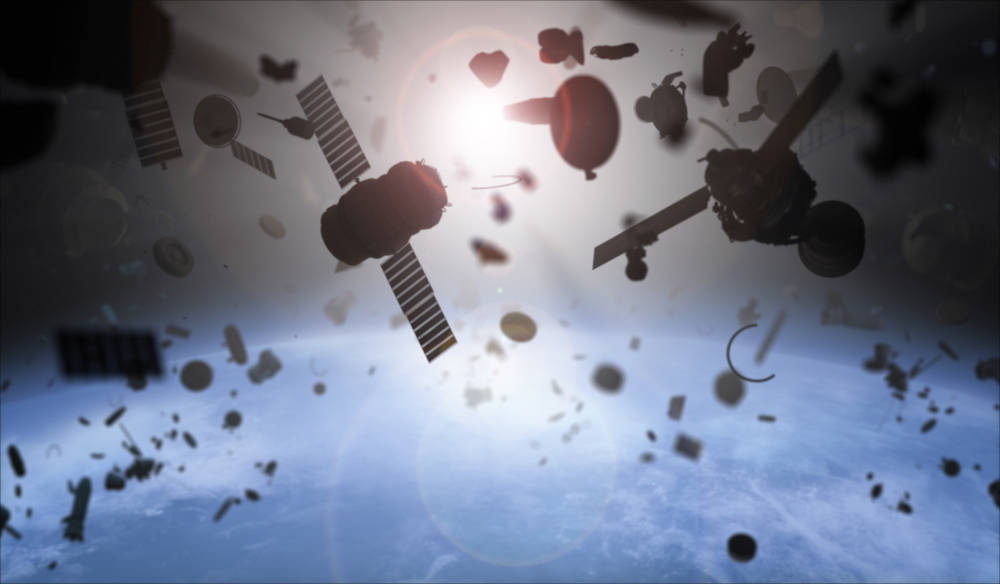James Webb Telescope Unveils a Mysterious Dwarf Galaxy That Shouldn’t Exist – Indian Defence Review

Astronomers using the James Webb Space Telescope have captured a stunning image of Leo P, a small, isolated dwarf galaxy located 5.3 million light-years away. Unlike most galaxies of its kind, Leo P has mysteriously resumed star formation after billions of years of dormancy, defying expectations about how galaxies evolve.Astronomers have captured a stunning and unexpected image of Leo P, a dwarf galaxy located 5.3 million light-years away in the constellation Leo. The James Webb Space Telescope (JWST), using its Near-Infrared Camera (NIRCam), has provided an unparalleled look at this pristine galaxy, offering new insights into the nature of early galaxy formation and the processes that govern the birth of stars.Leo P is particularly interesting to astronomers because of its chemical purity and isolation. Unlike larger galaxies such as the Milky Way or Andromeda, Leo P has remained largely untouched by interactions with other galaxies. It contains mostly hydrogen and helium, the most fundamental building blocks of the cosmos, making it an ideal subject for studying how galaxies first formed in the early universe. However, what makes this discovery even more remarkable is that Leo P, after a long period of dormancy, has resumed forming new stars—a phenomenon rarely observed in galaxies of this size and age.Galaxies evolve through complex cycles of star formation, often triggered by interactions with neighboring galaxies, the accumulation of cosmic gas, or gravitational disturbances. Many dwarf galaxies, once they experience a pause in star formation, never resume the process due to the lack of available gas and heavy elements needed to build new stars. Yet, Leo P appears to be an exception to this rule, with JWST’s new image confirming that this small galaxy has begun forming stars again billions of years after its last burst of stellar activity.The newly released image from January 2025 reveals a concentration of bright blue stars, clustered toward the lower right of the galaxy. This vivid coloration indicates the presence of young, hot stars, which contrast sharply with the older, redder stars scattered throughout the galaxy. Additionally, the image captures a bubble-like structure of ionized hydrogen, a telltale sign of active star formation, where newly formed stars emit intense radiation, stripping away electrons from surrounding hydrogen gas. This is clear evidence that Leo P is not a stagnant galaxy, but one that has somehow rekindled the ability to birth new stars despite its remote and isolated location.Scientists have pieced together a timeline of Leo P’s unusual history, determining that it has gone through at least three distinct phases. First, it experienced an initial burst of star formation during its early history, creating many of its current stellar populations. Then, for reasons not yet fully understood, the galaxy went into a long dormancy period, where star formation ceased for billions of years. Most galaxies that stop forming stars never reignite the process, yet Leo P has defied expectations by entering a third phase of renewed star formation, making it an extremely rare case in astrophysics.The unique characteristics of Leo P provide an exceptional opportunity to study the conditions that governed the early universe. Most galaxies today are the result of countless mergers and interactions, making it difficult to study them in their original form. However, because Leo P has remained isolated from other galaxies, it serves as a time capsule, preserving the same fundamental properties that galaxies had when they first formed over 13 billion years ago.One of the most intriguing aspects of Leo P’s history is that its long pause in star formation coincided with a period known as the Epoch of Reionization—a cosmic event that occurred between 150 million and 1 billion years after the Big Bang, when the first stars and galaxies formed and began shaping the universe. During this epoch, high-energy radiation from young galaxies ionized the neutral hydrogen in space, drastically altering the cosmic environment. Astronomers suspect that Leo P’s hiatus in star formation might be linked to this transformative period in cosmic history, which may have suppressed the ability of smaller galaxies to retain the gas necessary for forming new stars.To understand whether Leo P is a unique case or part of a broader trend, astronomers are now planning to use JWST to study four additional isolated dwarf galaxies. If these galaxies exhibit similar patterns of interrupted and reignited star formation, it could redefine how scientists view the life cycles of early galaxies and the factors that influence their long-term evolution.Comment Save my name, email, and website in this browser for the next time I comment.
© 2024 | Indian Defence Review | All rights reserved
Source: https://indiandefencereview.com/james-webb-telescope-dwarf-galaxy/





